Book Reviews
Little Library – Books Reviews. Every month, members of InclusioNado will read and review books on topics of diversity with diverse perspectives. Copies of the books reviewed will be distributed to Little Libraries all around Coronado for the community to read and return.
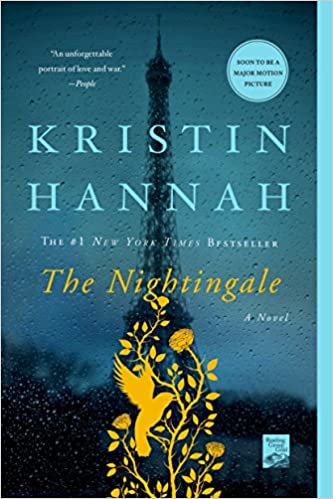
The Nightingale by Kristin Hannah
Summary:
France, 1939 – In the quiet village of Carriveau, Vianne Mauriac says goodbye to her husband, Antoine, as he heads for the Front. She doesn’t believe that the Nazis will invade France … but invade they do, in droves of marching soldiers, in caravans of trucks and tanks, in planes that fill the skies and drop bombs upon the innocent. When a German captain requisitions Vianne’s home, she and her daughter must live with the enemy or lose everything. Without food or money or hope, as danger escalates all around them, she is forced to make one impossible choice after another to keep her family alive.
Vianne’s sister, Isabelle, is a rebellious eighteen-year-old girl, searching for purpose with all the reckless passion of youth. While thousands of Parisians march into the unknown terrors of war, she meets Gäetan, a partisan who believes the French can fight the Nazis from within France, and she falls in love as only the young can … completely. But when he betrays her, Isabelle joins the Resistance and never looks back, risking her life time and again to save others.
Review:
I thought this book was a delightful read. In fact, this book is one of my favorite books I have ever read. I think all characters, but especially Isabelle, are so inspirational because of their tremendous strength. I also thought because it is the holiday season, reading a book about World War II and learning more about this historical event is very important as it is another way to recognize the horrors the Jews faced.
Discussion Questions:
- What is the bravest thing you’ve ever done, and why did you decide to do it?
- Have you ever been in a situation where you’ve had to choose a difficult option?
- Vianne and Isabelle have different mindsets when it comes to combating this war. Who do you connect with more and why?
Find this book in Little Libraries around Coronado, or purchase it on Amazon here.
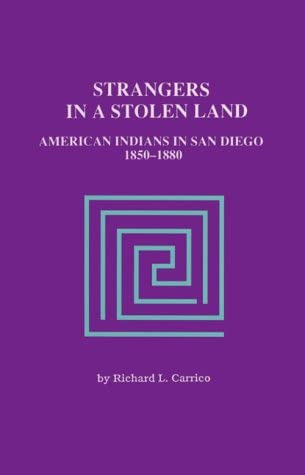
Strangers in a Stolen Land by Richard Carrico
Summary:
This is an overview of the history of Native Americans in the San Diego region from 1850-1880. The book lays out its central thesis that “the Indians of San Diego County were subjected to laws, acts, and injustices as violent, racist, and inhumane as those suffered by more famous and well chronicled Indians throughout North America” (3). Using a well-rounded approach, Carrico begins by summarizing the ways in which San Diego Native Americans lived and constructed their societies prior to colonial contact. He uses this history to contrast how their lives changed following the subjugation of San Diego Native Americans to a succession of Spanish, Mexican and American rule. This gives the reader an understanding of the gradual degradation of the quality of life of San Diego Native Americans over time.
Carrico then focuses on the 1850-1880 time period to highlight how the dynamic changed once the United States absorbed California with the 1848 Treaty of Guadalupe Hidalgo. Taking the professional and neutral approach of a historian, Carrico presents and contextualizes historical fact and highlights the source material that allowed him to draw his conclusions. The story of Native Americans in San Diego from 1850-1880 becomes one of empty promises, abuse and the absence of legal recourse. The fact that Native Americans were not considered to be U.S. citizens at this time meant they had no voice in the courts, Congress, or other seats of governmental influence.
Review:
This book is a sobering but necessary read to understand how San Diego County, and its relationships with the local Native Americans, came to be as it is today.
Discussion Questions:
- How does this history change your perspective on Native Americans in San Diego?
- If the Native American Tribes had effective legal representation, do you think the outcome for them would have been different?
- Does the historical record presented in the book suggest that actions are needed to address the plight of Native Americans under early U.S. rule?
Find this book in Little Libraries around Coronado, or purchase it on Amazon here.
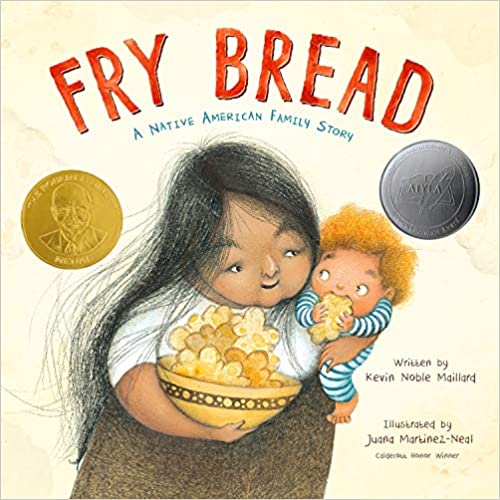
Fry Bread: A Native American Family Story by Kevin Noble Maillard
Summary:
Fry Bread is a great book for young children (ages 2-7) to learn more about Native American life, their food and history. It explains how Fry Bread became part of their diet when they were forced from their own lands and had limited resources to make food.
Review:
I personally love this book because it really shows who Native American people are and what happened to them. And I love how it shows new and old traditions. It even includes a recipe for fry bread which we have only eaten at Pow Wows in San Diego.
Discussion Questions:
- The book’s author is a member of the Seminole Nation/Mekusukey band. In the back of the book, he includes more Native American history with the names of all the tribes throughout the United States. Do you know how many tribes there are in San Diego County?
Find this book in Little Libraries around Coronado, or purchase it on Amazon here.
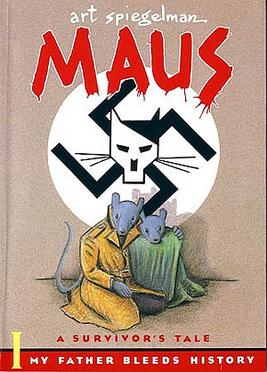
Maus by Art Spiegelman
Summary:
Maus is a nonfiction comic book about the Holocaust through characters being classified as specific animals (Jews: mice, Germans: cats, Polish: pigs, Americans: dogs, British: fish, French: frogs, Swedish: reindeer). The author uses frame narration as an interview technique as he interviews his father about his experiences during the Holocaust.
Review:
I enjoyed reading this book because I learned so much about the Holocaust. I found that the characters are depicted as different animals was an interesting way to learn about the many different people and aspects of the Holocaust. When I first opened the book, I was surprised to see it was a comic book, but I enjoyed looking at the comics as they helped my imagination come to life.
Discussion Questions:
- What do you think made this book so controversial? Do you agree or not?
- How did the comic aspect of the book contribute to the plot?
- What was something you learned about the Holocaust? Why do you think you didn’t know this before?
- What is something you learned about war?
Find this book in Little Libraries around Coronado, or purchase it on Amazon here.
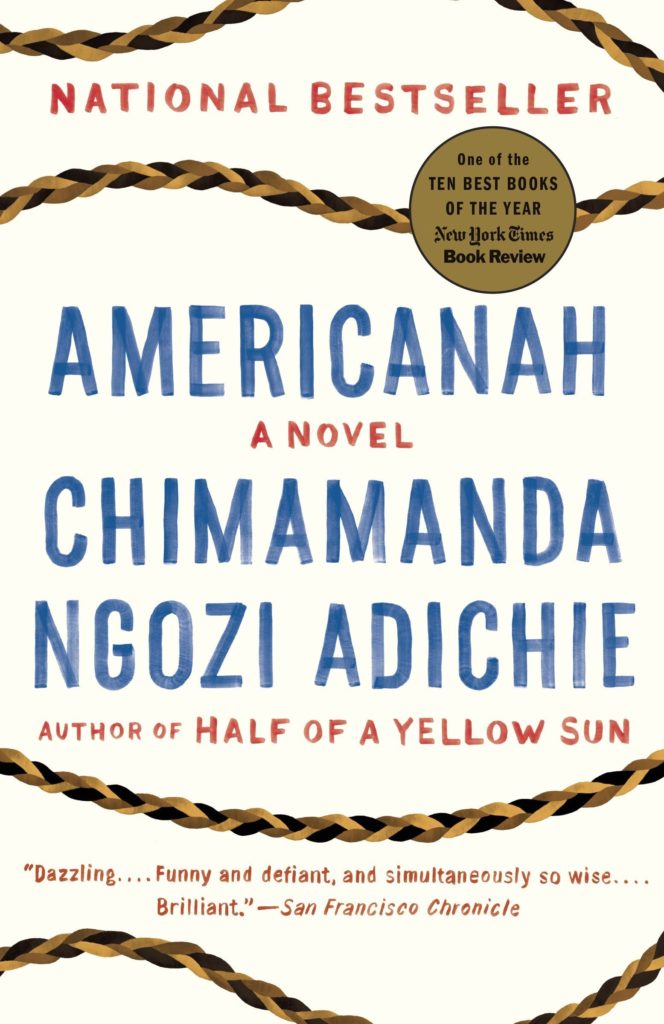
Americanah by Chimamanda Ngozi Adichie
Summary:
Young lovers Ifemelu and Obinze grow up in Nigeria and are forced to separate as Ifemelu moves to the United States to pursue higher education opportunities. Obinze soon leaves Nigeria to go to England and live as an undocumented immigrant. Both encounter personal and professional struggles in their new lives driven around their race and identities. Obinze then moves back to Nigeria and finds a wife and economic success. Ifemelu struggles in the United States, but she finds comfort in writing for her blog: Raceteenth or Various Observations About American Blacks (Those Formerly Known as Negroes) by a Non-American Black. After spending many years in the United States and longing for her home, Ifemelu moves back to Nigeria. The two reconnect and rekindle their relationship amid their current lives.
Review:
I loved reading this story! I was most intrigued to read this novel because of learning about the Black experience from a non-American Black. I think this viewpoint is critical to learning about race in general, and especially in America. I also really enjoyed reading about Ifemelu and her courage when facing personal and professional challenges. I think how she uses words to drive change is so important to educating others.
Discussion Questions:
- How would you respond to Ifemelu’s name of her blog? Why do you think different people respond differently?
- How is imposter syndrome experienced by a character? How does it contribute to their well being? What sets up this imposter syndrome for this character?
- How does your own race affect the experience of reading Americanah?
- How is the motif of hair used in this novel? What does it represent?
Find this book in Little Libraries around Coronado, or purchase it on Amazon here.
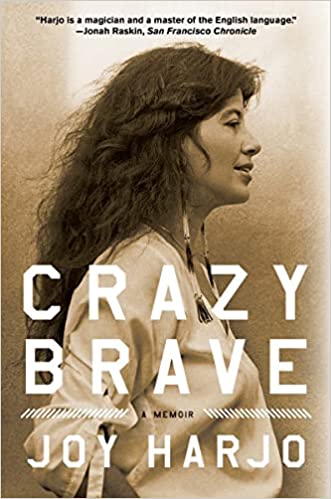
Crazy Brave by Joy Harjo
Summary:
This is a memoir of Harjo’s childhood and early adulthood as an Indian in Oklahoma and New Mexico in the 1950s-1970s. It is written by a true storyteller who weaves the spiritual into her straightforward reflection on her life. The book chronicles her openhearted early days of great connection to all things, her childhood spent avoiding an abusive stepfather, her journey into art, love, a teen pregnancy, domestic abuse, and the overarching grace that she kept finding. Throughout her life, there was a knowingness that offered quiet guidance. She often followed it and sometimes did not. The presence of knowingness is the constant backdrop in her life as were the leaky boundaries between this world and other worlds that allowed her to gain strength directly from her ancestors.
Review:
Harjo tells her story as part of her ancestors’ story in clear, honest language that honors all who play their part in the story. It is easy to read in a few hours but will stay with you much longer because it is a vivid account of one Creek girl’s experience in this world and other worlds.
Discussion Questions:
- The appreciation and understanding of her ancestors is a strong theme in this book. Harjo draws strength from the stories of them that she has heard and feels a direct connection to them. Were you told stories of your ancestors?
- She writes that TV has taken the place of the storytellers who passed down intergenerational stories. Do you think that’s true?
- Harjo’s stepfather is abusive and the household tiptoes around him. There is a way she felt not brave because her options were limited. She eventually finds a path that works for her. In the process, there are steps of bravery without calling it that. What meanings could the title of the book carry?
Find this book in Little Libraries around Coronado, or purchase it on Amazon here.
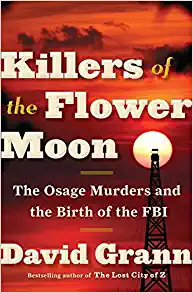
Killers of the Flower Moon: The Osage Murders and the Birth of the F.B.I. by David Grann
Summary:
Writer and journalist David Grann gives a detailed and chilling account of a little-known chapter in American history: the Osage “Reign of Terror” that began in the 1920s when more than 20 members of the Osage Nation in Oklahoma were mysteriously murdered by nefarious white settlers. After oil was discovered beneath their land, the Osage became the wealthiest people per capita in the country. However, the government deemed them “incompetent,” and laws were enacted to force them into guardianships so that their white neighbors could control their fortunes. One by one, the Osage began dying under mysterious circumstances, and many who tried to investigate the murders were themselves killed. As the death toll increased, the newly created F.B.I. (under the control of J. Edgar Hoover) began investigating with the help of bootleggers, moonshiners, cattle rustlers and others. Eventually, a former cattle rancher (who is also a deputy sheriff) is convicted of some of the crimes and receives a life sentence, but most of the Osage murders were never solved and justice for the Osage people was never truly obtained.
Review:
This disturbing and riveting story of a forgotten (or never-told) chapter in American history reads like the plot of a detective novel. It is full of suspense and intrigue, and is brilliantly written to expose the outrageous cruelty, trickery and evil that was perpetrated on the Osage Nation over the course of nearly two decades. For me, it was unsettling to discover this sinister culture of killing and complicity, and interesting to learn that a clash of two cultures led to the emergence of modern law enforcement. Most of all, reading this book made me wonder: How much history – like the Tulsa Massacre in 1921 – don’t we know because it wasn’t taught in school?.
Discussion Questions:
- Before reading this book, did you know anything about the Osage murders? Why do you think they were forgotten? Should this be taught in schools?
- Was it a racist system that allowed the government to prohibit the Osage from spending their own money? Discuss the pretense of enlightenment that the Osage needed protection.
- What emotions did Mollie Burkhart evoke in you as she experienced the deaths of her family members one by one? When do you think Mollie began to suspect that her husband was complicit in the murders?
- The investigation of the Osage murders was the F.B.I.’s first big case. How do you think it was handled? Were you surprised to learn these murders may have numbered in the hundreds?
- The author laments that “History is a merciless judge.” Discuss what this means to you.
Find this book in Little Libraries around Coronado, or purchase it on Amazon here.
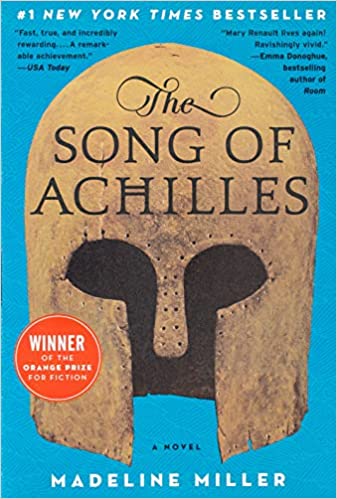
The Song of Achilles by Madeline Miller
Summary:
The Song of Achilles is a novel based on the relationship between the Greek prince Achilles and his friend and lover Patroclus. The book describes their time in Phthia as friends and then their training with the centaur Chiron into lovers. Then as the Trojan War calls Achilles, Patrolcus accompanies him at his side as Achilles transitions into a great hero. This story delves deep into the meaning of true love and companionship even in the hardest of times.
Review:
I genuinely cried reading this book because of how beautifully Miller describes the relationship between Achilles and Patroclus. The Greeks were known to have relationships with both sexes, but to read a fiction novel about a homosexual relationship in a time long ago was so unique. While reading this book, I got to learn so much more about Greek mythology. When I was a freshman at CHS, I learned general information about the Trojan War in English 9 that contributed to my understanding of this book. This book does have some PG-13 scenes, so I recommend this book if you are 16 years old and older.
Discussion Questions:
- How does Achilles’s family accept/reject Patroclus as his partner?
- Compare and contrast how Ancient Greece and current day society view homosexuality.
- What information did you learn about Greek gods and princes from this book?
- 4. Do you think lovers have a right to be buried next to each other, even if their family disapproves of them?
Find this book in Little Libraries around Coronado, or purchase it on Amazon here.
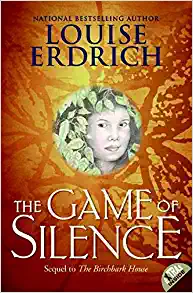
Game of Silence by Louise Erdrich
Summary:
Omakayas, or Little Frog, lives on an island in Lake Superior in 1850 with her tribe: the Ojibwe. The regular daily routines of Omakayas’s days are interrupted by a surprise visit from a group of desperate and mysterious people. From them, she learns that all their lives may drastically change because the white people want Omakayas and her people to leave their island in Lake Superior and move farther west. Omakayas comes to the conclusion her life and home are in extreme danger.
Review:
I enjoyed reading this novel because it provided me with a book on American Indians told by one herself, Erdrich. I usually only read about American Indians out of the spotlight; for example, during Thanksgiving I read books about how the Pilgrims settled in Jamestown and were assisted by American Indians. The story being told from a young girl’s perspective makes this book perfect for elementary and middle school children. I read this as a 17-year-old girl, and I recommend it to high schoolers and adults as well. In addition, I really enjoyed learning about the Ojibwe tribe. It is mind-opening to learn so much about other people’s cultures and how they differ from our own.
Discussion Questions:
- Do you know anything about the Ojibwe tribe? Why do or don’t you?
- Find a cool example of Omakayas’s culture from the book!
- Little Frog was given her name because her first step was a hop and she lives on an island. What would your name be if naming was based on this category in your culture?
- Would you feel comfortable taking in strangers who come to your land (refugees)?
- How would you feel if you were forced to move?
- What does family mean to you?
Find this book in Little Libraries around Coronado, or purchase it on Amazon here.
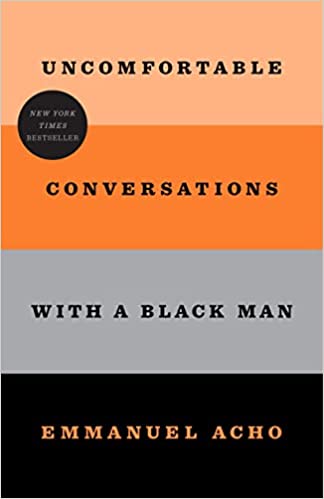
Uncomfortable Conversations With a Black Man by Emmanuel Acho
Summary:
Emmanuel Acho, the son of African immigrant parents, a former NFL player and national sports analyst has recently been spending time writing this book and producing videos of uncomfortable conversations about race and racism. This book welcomes the reader into a frank conversation. He answers questions you may have always wanted to ask a Black friend.
Review:
I enjoyed this book for its refreshing honesty and straightforward approach to racism. Let’s talk about topics we’ve avoided! Acho openly shares personal stories and his take on historical and current events in a way that is open and engaging. I highly recommend this book and his Uncomfortable Conversation videos with celebrities, athletes and the police. Good for teenagers too.
Discussion Questions:
- What language do we use when referring to Black Americans?
- Is reverse racism a real problem?
- Why are many Black families plagued with poverty and crime and lack of father figure?
- Is there bias in our justice system?
- How can a person be an Ally?
Find this book in Little Libraries around Coronado, or purchase it on Amazon here.
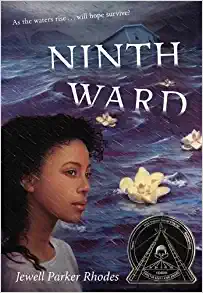
Ninth Ward by Jewell Parker Rhodes
Summary:
Twelve-year-old Lanesha lives with her loving caretaker, Mama Ya-Ya, in a historically Black part of New Orleans’ Ninth Ward. Lanesha does not have many nice things in life but she has a dog, fiercely loyal friends, and family that make her happy. When Hurricane Katrina devastates New Orleans, Lanesha experiences tragedies and happiness while trying to return to normal life.
Review:
As a teenager, I enjoyed reading this book written from Lanesha’s point of view. Although Lanesha is 12 years old, her character is relatable for older readers. Lanesha’s struggle to return to safety is the main plot, but the setting and references to history and black culture help the reader learn more about this difficult time and Black culture. While there are several sad moments in the book, there are also uplifting moments showing Lanesha’s intelligence, courage and bravery. Overall, I highly recommend this book as an interesting way to learn about Hurricane Katrina and the impact on Black communities through the narrative of a child.
Discussion Questions:
- What is an ordinary day like in the Ninth Ward? How does it compare to an ordinary day in your own neighborhood?
- What is special about Lanesha? What gifts do you have that are unique in your family or neighborhood?
- Why does Lanesha get involved when there is a fight? How would you handle bullies in your school or neighborhood?
- Why doesn’t Lanesha leave New Orleans when the hurricane is coming? Why do some people stay while others evacuate?
- How do they survive the flood? How does Lanesha save the day with her mathematical thinking?
- What would you do if Coronado flooded? Where would you go?
Find this book in Little Libraries around Coronado, or purchase it on Amazon here.
